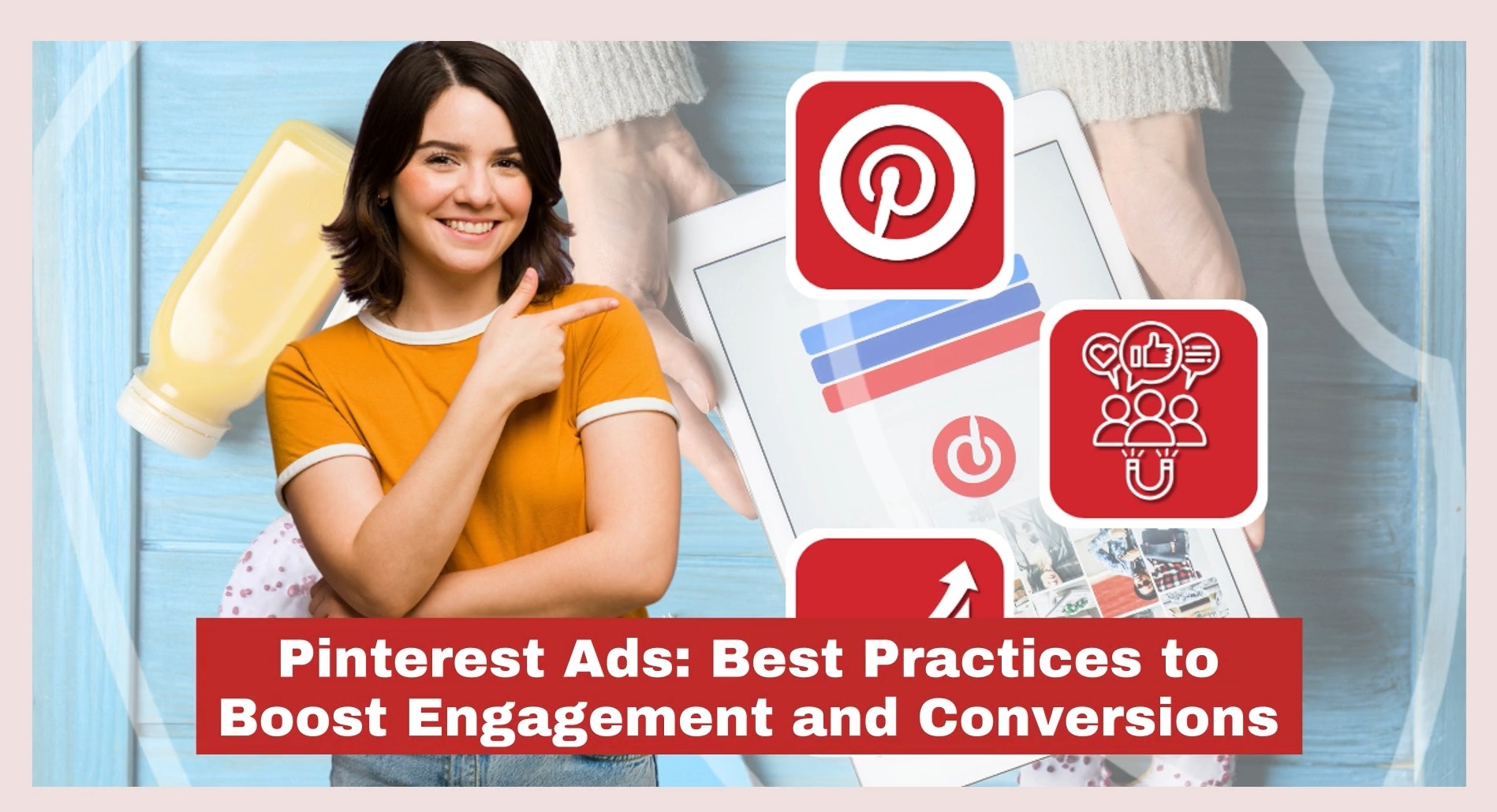What separates a passive scroll from a decisive click? Often, it’s the strength of your call-to-action.
Whether you're looking to grow your email list, convert leads into customers, or boost webinar attendance, your CTA is the tipping point.
But writing CTAs that actually get clicked?
That’s where many marketers struggle.
So, what makes one CTA irresistible—and another forgettable?
In this guide, you’ll learn how to:
- Map CTAs to the right stages of your marketing funnel
- Craft high-impact CTA copy that drives clicks
- Design CTAs that grab attention without overwhelming the page
- Optimize placement and visibility for stronger engagement
- A/B test variations for continuous performance improvements
- Tailor CTAs by platform—from landing pages to email and social
If you're ready to increase conversions and make every campaign count, let’s break down the tactics behind CTAs that move the needle—so your next button gets the click it deserves.
Understanding the Role of CTAs in Marketing Funnels
Calls-to-action (CTAs) do more than direct clicks—they shape the customer journey, guiding prospects through each stage of your marketing funnel.
From initial awareness to the final action, CTAs serve as signposts directing users on where to go next, making them essential for a seamless customer journey.
How CTAs Function at Different Stages of a Marketing Funnel
Awareness
The top of the funnel is all about grabbing attention.
Here, CTAs like "Learn More" or "Read More" can gently nudge visitors to engage with your content further, helping you increase their interest and knowledge about your product or service.
Consideration
As potential customers move down the funnel, your CTAs should evolve to encourage deeper interaction. Use CTAs such as "Download a Free Trial" or "View a Demo" to get users to consider your offerings as viable solutions to their problems.
Decision
At the bottom of the funnel, your CTAs must be strong and compelling.
Phrases like "Buy Now" or "Get Started Today" aim to convert.
At this point, your CTA should be bold and persuasive, pushing the leads towards making a purchase or signing up.
Each stage requires a different approach to CTAs not just in wording but also in placement and design, reflecting the user’s journey from curiosity to commitment.
Transitioning Through Funnel Stages with Effective CTAs
To ensure your CTAs effectively lead a potential customer from one stage to another, consider the following tips:
By understanding and implementing distinct CTAs tailored to each stage of the marketing funnel, you can more effectively guide prospects towards conversion, turning casual browsers into loyal customers.
Remember, a well-placed CTA can be the difference between a lead and a conversion, so give your CTAs the attention they deserve!
Key Characteristics of Powerful CTAs
Crafting a call-to-action that converts isn't just about telling your audience what to do next; it's about compelling them to act with urgency and enthusiasm.
To create powerful CTAs, you need to ensure they possess certain key characteristics that can significantly boost their effectiveness.
1. Clarity and Conciseness
A powerful CTA is clear and concise.
Your audience should understand exactly what you expect them to do.
Use direct language and avoid vague phrases.
The simpler and more straightforward your CTA, the better.
Instead of saying "Click here for more information," use "Download Your Free Guide Now!"
2. Action-Oriented Language
Every CTA should begin with a strong action verb that encourages immediate action.
This turns a passive suggestion into an active opportunity.
- Subscribe
- Register
- Join
- Start
3. Visibility
Your CTA should stand out visually.
This can be achieved through contrasting colors, bold text, or a dynamic shape that draws the eye.
Remember, if your CTA blends into the background, it's likely to be overlooked.
Test different colors and formats.
Sometimes, a button in a contrasting color performs better than one that matches your brand palette.
4. Sense of Urgency
Creating a sense of urgency can encourage users to act swiftly.
Phrases that suggest limited time offers or limited availability can increase the effectiveness of your CTAs.
5. Value Proposition
Your CTA should clearly state what the user gains by taking the suggested action.
Highlight the benefits directly in the CTA or immediately next to it to reinforce the value of clicking.
"Get Instant Access to Exclusive Tips!"
6. Emotional Appeal
Tap into the emotions of your users with CTAs that speak to their desires, needs, or fears.
An emotionally compelling CTA can be a powerful motivator for action.
"Start achieving your dreams today!"
7. Strategic Placement
Place your CTAs where they naturally fit into the flow of content.
Whether it's at the end of a compelling blog post, beside an exciting product description, or at the conclusion of a persuasive video, placement can maximize visibility and relevance.
CTAs at the end of high-engagement sections typically see higher click-through rates.
By integrating these characteristics into your CTAs, you enhance their potential to convert.
Remember, a powerful CTA is not just a button or a line of text—it's an invitation to your audience to take the next step towards becoming customers or loyal fans.
Test, refine, and optimize your CTAs continuously to achieve the best results.
Emotional CTAs like ‘Start achieving your dreams today’ tap into user desires—motivation often drives more action than logic alone.Click To Post OnDesigning CTAs for Maximum Impact
Creating an effective call-to-action goes beyond just the words you use.
The design elements of your CTA can significantly influence how it performs.
Here's how you can design your CTAs to ensure they grab attention and encourage clicks.
1. Color Psychology
Color decisions impact more than appearance—they influence perception and behavior.
Different colors evoke different feelings and actions from people.
For a CTA, you want colors that stand out yet fit harmoniously within your overall design.
Use contrasting colors for your CTA button to make it pop.
If your site has a blue palette, an orange button would stand out due to its complementary color scheme.
2. Size and Shape
The size of your CTA button should be large enough to be noticeable but not so large that it overwhelms other elements.
The shape can also affect perception; rounded corners are often perceived as friendly, while sharp corners can suggest efficiency.
A study found that larger buttons can increase conversion rates, but only if the increased size maintains balance with other page elements.
3. Placement
Placement can dramatically affect the performance of your CTA.
It should be placed in a location where users naturally focus their attention.
Common high-impact areas include above the fold, at the end of significant content sections, or integrated into a well-structured layout where it follows logically.
Heatmaps can show you where users tend to focus on your page, helping you place CTAs in these hotspots.
4. Whitespace
Don't underestimate the power of simplicity.
Clutter can distract users, but ample whitespace around your CTA can draw the eye directly to it.
Ensure your design isn't too busy or competing for attention against your CTA.
More whitespace around your CTA can increase user attention by up to 20%.
5. Typography
The font you choose for your CTA should be readable and large enough to be easily seen.
The weight of the font can also play a role; bolder fonts capture more attention and can reinforce the message.
Keep your CTA text short and punchy. A concise message in a bold, clear font is easy for users to process quickly.
6. Responsive Design
With the increasing use of mobile devices, ensuring your CTA is visible and clickable on screens of all sizes is crucial.
A responsive design adjusts your CTA's size, shape, and placement based on the device, providing an optimal user experience.
Regularly test your CTA on multiple devices to ensure it’s effectively engaging users across all platforms.
By focusing on these design elements, you can create CTAs that not only catch the eye but also entice users to take action.
Remember, the goal of your CTA design should be to make the path to conversion as smooth and compelling as possible.
Incorporate these strategies to enhance visibility, appeal, and user interaction with your CTAs.
Writing Compelling CTA Copy
Crafting the text for your call-to-action (CTA) can significantly impact its effectiveness.
The right words can motivate your audience to click, while the wrong ones can leave your buttons cold.
Here's how to write CTA copy that grabs attention and prompts action.
Use Direct, Action-Oriented Language
Start with a strong verb that encourages action.
This approach is direct and leaves no room for ambiguity about what the reader should do next.
- Download
- Subscribe
- Join
- Discover
Create a Sense of Urgency
Encouraging quick action can prevent users from procrastinating or navigating away.
Using time-sensitive language can increase the likelihood of immediate clicks.
✔️ Hurry
✔️ Limited time
✔️ Now
✔️ Today only
Highlight the Benefit
Always answer the user's implicit question, "What's in it for me?"
Your CTA should make it clear what the user gains by taking action.
Instead of "Submit," use "Get My Free Ebook" to emphasize the tangible benefit the user will receive.
Keep It Short and Sweet
CTA copy should be concise.
Ideally, keep your CTA under five to seven words.
This brevity ensures that the message is easy to read and understand at a glance.
Test different lengths to find what works best with your audience.
Sometimes, even a two-word CTA can be incredibly effective!
Use Numbers When Possible
Numbers can draw attention and add a sense of specificity or value to your offer.
"Join 20,000+ Subscribers!"
This not only shows popularity but also enhances credibility.
Personalize It
If possible, personalize your CTA based on the user's behavior or data you have.
Personalized CTAs tend to perform better because they feel more relevant to the individual.
Personalized CTAs can increase conversions by up to 202% compared to generic ones.
Test and Refine
Always be testing.
What works for one audience might not work for another.
A/B testing can help you compare different versions of your CTA to see which is more effective.
Small changes in wording can lead to significant differences in conversion rates.
Use First-Person Language
Sometimes, switching the viewpoint to first-person can make the CTA more relatable.
Change "Start Your Free Trial" to "Start My Free Trial" to make the action feel more personal.
By implementing these strategies, you can write CTA copy that not only captures attention but also drives action.
Remember, the goal of your CTA is to move users along in their journey with your brand, whether that's signing up for a newsletter, downloading a resource, or making a purchase.
Make every word count, and don't be afraid to keep refining your approach based on what resonates with your audience.
A/B Testing for CTAs
Optimizing your calls-to-action (CTAs) isn't a one-time task—it's an ongoing process of testing, analyzing, and refining.
A/B testing, also known as split testing, is a crucial method for determining which elements of your CTA perform best.
By comparing two versions of a CTA, you can gather data-driven insights that inform your decisions and enhance your conversion rates.
Setting Up Your A/B Test: A Step-by-Step Guide
1. Identify your goal
Begin by deciding what you want to improve.
Is it click-through rate, conversion rate, or maybe the bounce rate on a landing page?
Having a clear goal will guide your testing process.
2. Create two variants
Design two versions of your CTA.
Change one element at a time, such as the color, wording, or placement, so you know exactly what impacts performance.
3. Split your audience
Divide your traffic evenly between the two variants.
Ensure each segment is randomly selected to maintain the integrity of your test.
4. Run the test
Allow the test to run until you have statistically significant results.
This usually means waiting until you have enough data to make a reliable decision.
5. Analyze the results
Compare the performance of both versions.
Which one achieved your goal more effectively?
6. Implement changes
Use the insights gained from the test to optimize your CTA.
Roll out the successful variant to all users.
7. Repeat
A/B testing is a cyclical process.
Always look for new elements to test and refine.
Metrics to Measure
- Click-through rate (CTR)—measures how many people clicked on each version of the CTA.
- Conversion rate—tracks how many of those clicks resulted in the desired action (e.g., sales, sign-ups).
- Bounce rate—assesses if changes in the CTA affect how quickly people leave your page after arriving.
🚀 Use A/B testing tools like Google Optimize, Optimizely, or VWO.
These platforms can automate much of the process, providing not only testing capabilities but also detailed analytics that help you understand user behavior.
Even small changes can lead to significant improvements.
Changing the wording from "Buy now" to "Get yours today" might increase conversions by making the CTA feel more immediate and personal.
By regularly employing A/B testing in your CTA strategy, you not only enhance the effectiveness of your CTAs but also deepen your understanding of what drives your audience to take action.
This continuous loop of testing and optimization is key to keeping your digital marketing strategy sharp and effective.
Examples of Successful CTAs
Analyzing real-world examples of successful CTAs can provide valuable insights into crafting your own.
Check out the following post for over 60 examples of successful CTAs from around the web:
These examples illustrate how a well-crafted CTA can be a game-changer in converting visitors to users or customers.
Notice the common themes: clear value propositions, the use of urgency, and the strategic use of design elements to make the CTA stand out.
When designing your own CTAs, keep these principles in mind to create compelling, clickable buttons that drive user action and contribute to your business goals.
Advanced CTA Strategies for Specific Platforms
Effective CTAs aren't one-size-fits-all; their design and messaging may vary significantly across different digital marketing platforms.
Each platform offers unique opportunities for engagement, and understanding these can help you tailor your CTAs for maximum impact.
Here’s how to optimize your CTAs for a few key platforms:
1. Email Marketing
2. Social Media
Tailor your CTAs to the specific social media platform culture and user behavior.
A CTA on LinkedIn might be more formal compared to one on TikTok.
3. Landing Pages
4. Blog Posts
A CTA for a free trial could follow a section discussing the benefits of the product.
Encourage readers to comment or share your post by including CTAs like "Share your thoughts below" or "Spread the word!"
By adapting your CTA strategies to fit the unique characteristics and user expectations of each platform, you can enhance their effectiveness and boost your overall conversion rates.
Remember, the key to successful CTAs is a combination of compelling copy, strategic placement, and continuous optimization.
Whether it’s through personalized email prompts, attention-grabbing social media posts, optimized landing pages, or engaging blog content, the right CTA can make all the difference in achieving your marketing goals.
Frequently Asked Questions
What are the key characteristics of a powerful call-to-action (CTA)?
A powerful CTA should be clear, concise, action-oriented, visually distinct, create urgency, provide a value proposition, have an emotional appeal, and be strategically placed.
How can you design CTAs for maximum impact?
Use contrasting colors, ensure the CTA is large enough, place it strategically, use ample whitespace, choose readable typography, and ensure it's responsive on all devices.
What strategies can improve CTA effectiveness on different digital marketing platforms?
Tailor CTAs to platform specifics, use personalization, ensure visibility, create urgency, and continuously test and optimize for best performance.
Why is A/B testing important for optimizing CTAs?
A/B testing helps determine the most effective elements of a CTA by comparing different versions, leading to better conversion rates.
To Conclude
Effective CTAs do more than prompt clicks—they drive measurable outcomes.
To boost conversions, focus on clarity, urgency, and relevance. Design your CTAs to stand out, tailor them to your funnel stages, and back every decision with testing and data.
The right CTA can turn passive traffic into pipeline.
Start applying these strategies today—and make every click count.







